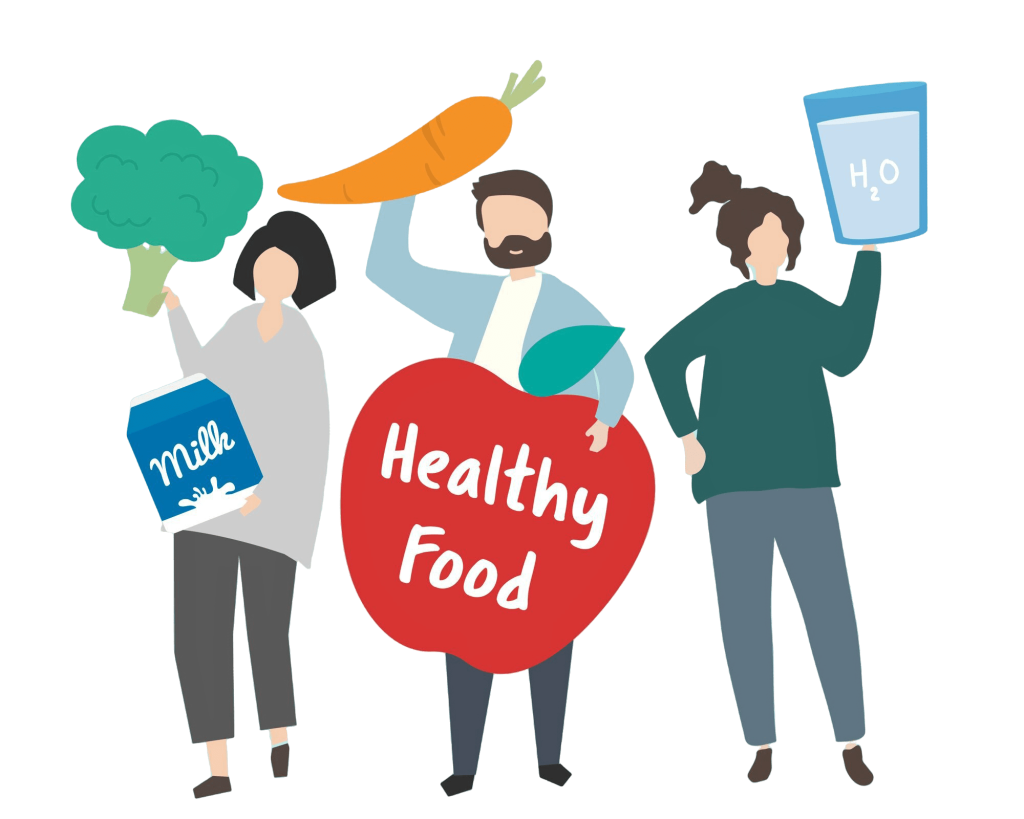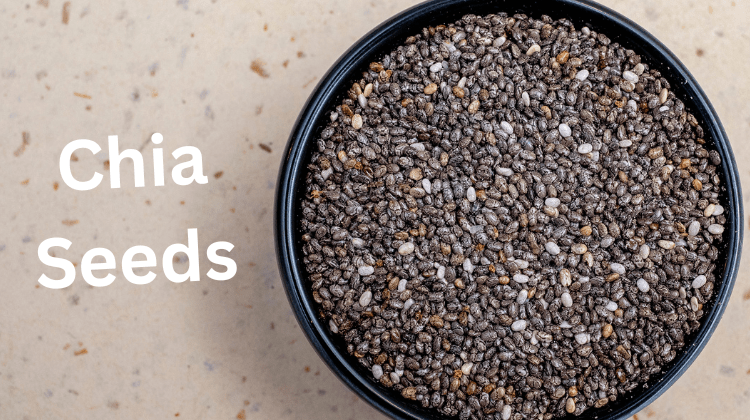Plant-based diets are rapidly growing in popularity as more people look for healthier and sustainable food choices. Research shows that plant-based protein meals support heart health, improve digestion, and provide long-lasting energy without the excess saturated fat found in many animal products.
Nutrition experts also highlight the role of plant proteins in weight management and overall wellness, thanks to their high fiber, vitamins, and minerals. Beyond personal health, eating plant protein contributes to a more eco-friendly lifestyle, since producing legumes, grains, and seeds requires fewer resources compared to meat.
This guide will share simple, protein-packed meal ideas for breakfast, lunch, and dinner, helping you enjoy balanced nutrition while making a positive impact on both your body and the planet.
Plant-Based Protein Breakfast Ideas
Starting your day with a protein-rich breakfast sets the tone for steady energy, focus, and satiety. Fortunately, there are plenty of plant-based protein breakfast ideas that are not only healthy but also quick and delicious. Here are four easy vegan breakfast recipes that pack a protein punch.
1. Tofu Scramble with Vegetables
A tofu scramble is one of the most popular high-protein vegan breakfast options because it closely mimics scrambled eggs in both texture and flavor.
- Protein source: Firm tofu provides around 10 grams of protein per half-cup.
- How to make it: Crumble tofu into a pan, season with turmeric, garlic, and black salt, and add vegetables like spinach, bell peppers, or mushrooms.
- Why it works: This meal delivers protein, fiber, and antioxidants, making it a nutrient-dense start to the day.
2. Overnight Oats with Chia Seeds and Almond Butter
Overnight oats are perfect for busy mornings when you want a grab-and-go option.
- Protein source: Chia seeds (4g per 2 tbsp) + almond butter (7g per 2 tbsp).
- How to make it: Mix rolled oats with plant milk, chia seeds, and almond butter. Let it sit overnight in the fridge. In the morning, top with fresh fruits or nuts.
- Why it works: This recipe is a balanced combination of protein, healthy fats, and slow-digesting carbs for long-lasting energy.
3. High-Protein Vegan Smoothie (with Pea Protein Powder)
Smoothies are one of the easiest plant-based protein breakfast ideas for people who need something quick yet filling.
- Protein source: Pea protein powder (20g per scoop) combined with nut butter or soy milk.
- How to make it: Blend pea protein powder with spinach, banana, berries, and almond or soy milk. Add a spoonful of peanut butter for extra protein and creaminess.
- Why it works: This smoothie is customizable, nutrient-dense, and perfect for pre- or post-workout fuel.
4. Quinoa Breakfast Bowl with Fruits and Nuts
Quinoa isn’t just for lunch or dinner—it makes an excellent high-protein breakfast grain.
- Protein source: Quinoa (8g per cooked cup) + nuts/seeds for an extra boost.
- How to make it: Cook quinoa in plant milk, then top with sliced fruits, almonds, pumpkin seeds, or a drizzle of maple syrup.
- Why it works: This breakfast is naturally gluten-free, rich in protein, and provides a hearty, satisfying start to the day.
Plant-Based Protein Lunch Ideas
Midday meals should be filling enough to keep you energized, yet light enough to avoid an afternoon slump. With the right ingredients, you can create plant-based protein lunch ideas that are both satisfying and nutrient-packed. Below are four high-protein vegan lunch recipes that make healthy eating easy and delicious.
1. Chickpea and Avocado Wrap
This simple wrap is a go-to option for a quick, protein-rich lunch.
- Protein source: Chickpeas provide about 15 grams of protein per cooked cup.
- How to make it: Mash chickpeas with avocado, lemon juice, and a pinch of garlic. Spread onto a whole-grain tortilla and add fresh greens, tomatoes, and cucumber.
- Why it works: The combination of chickpeas and avocado makes this wrap creamy, satisfying, and rich in both protein and heart-healthy fats.
2. Lentil and Vegetable Soup
A warm bowl of lentil soup is comforting, filling, and full of plant protein.
- Protein source: Lentils contain around 18 grams of protein per cooked cup.
- How to make it: Cook lentils with carrots, celery, tomatoes, and spinach in vegetable broth. Add spices like cumin and paprika for flavor.
- Why it works: This dish offers high protein, plenty of fiber, and immune-boosting vitamins—perfect for a healthy lunch.
3. Quinoa and Black Bean Salad
This colorful salad is one of the most versatile healthy vegan lunch bowls.
- Protein source: Quinoa (8g per cooked cup) + black beans (15g per cooked cup).
- How to make it: Combine cooked quinoa, black beans, corn, bell peppers, and cherry tomatoes. Toss with olive oil, lime juice, and fresh cilantro.
- Why it works: Packed with protein, complex carbs, and antioxidants, this salad keeps you full and energized for hours.
4. Tempeh Buddha Bowl with Tahini Dressing
A Buddha bowl is the ultimate high-protein vegan lunch recipe—nutritious, colorful, and customizable.
- Protein source: Tempeh provides 20 grams of protein per cup.
- How to make it: Pan-sear tempeh and serve it over a base of brown rice or quinoa. Add steamed broccoli, roasted sweet potatoes, and kale. Drizzle with a creamy tahini dressing.
- Why it works: This bowl delivers balanced macronutrients—protein, fiber, and healthy fats—making it ideal for an energizing midday meal.
Plant-Based Protein Dinner Ideas
Dinner is often the most comforting meal of the day, and with the right ingredients, it can also be one of the most protein-rich. Whether you want something light and wholesome or hearty and filling, these plant-based protein dinner ideas offer the perfect balance of flavor and nutrition. Each recipe is designed to be simple, satisfying, and packed with protein.
1. Grilled Tofu with Stir-Fried Vegetables and Brown Rice
Tofu is one of the most versatile sources of plant protein, and grilling gives it a delicious smoky flavor.
- Protein source: Tofu (10g per ½ cup) + brown rice (5g per cup).
- How to make it: Marinate tofu in soy sauce, garlic, and ginger before grilling. Serve it with a mix of stir-fried vegetables like broccoli, bell peppers, and snap peas over steamed brown rice.
- Why it works: This dish provides a complete, protein-rich dinner that’s both satisfying and nutrient-dense.
2. Vegan Chili with Lentils and Kidney Beans
A hearty bowl of chili is a classic comfort food—and it’s even better when loaded with plant protein.
- Protein source: Lentils (18g per cup) + kidney beans (15g per cup).
- How to make it: Cook lentils and beans with tomatoes, onions, peppers, and spices like cumin and chili powder. Simmer until thick and flavorful.
- Why it works: This recipe combines two protein-rich legumes, giving you a high-protein plant-based dinner that’s perfect for cold nights.
3. Stuffed Bell Peppers with Quinoa and Black Beans
Stuffed peppers are a colorful, nutrient-packed dinner option.
- Protein source: Quinoa (8g per cup) + black beans (15g per cup).
- How to make it: Hollow out bell peppers and stuff them with a mixture of cooked quinoa, black beans, corn, and diced tomatoes. Bake until the peppers are tender.
- Why it works: This dish is visually appealing, high in protein, and rich in fiber, making it both filling and family-friendly.
4. Vegan Pasta with Lentil “Meatballs”
A protein-packed twist on a classic Italian favorite.
- Protein source: Lentils (18g per cup) + whole-grain pasta (8g per cup).
- How to make it: Blend cooked lentils with breadcrumbs, garlic, and Italian herbs, then roll into “meatballs” and bake. Serve with marinara sauce over whole-grain pasta.
- Why it works: This easy vegan dinner recipe delivers comfort food vibes while providing a balanced, high-protein plant-based dinner.
Tips for Getting Enough Protein on a Plant-Based Diet
Getting enough protein on a plant-based diet is simple when you focus on variety and smart meal planning. Here are key strategies to ensure you meet your daily needs:
Combine Foods for Complete Proteins
Not all plant foods provide all nine essential amino acids, but combining them can make a complete protein. Classic pairings include:
- Rice and beans
- Whole-grain bread with hummus
- Quinoa with lentils or black beans
This ensures you get balanced amino acids throughout the day.
Meal Prep with Protein-Rich Staples
Keep versatile protein-rich foods ready to save time and boost nutrition. For example:
- Cook a batch of lentils, quinoa, or chickpeas at the start of the week.
- Store pre-roasted tofu or tempeh for quick meals.
- Add nuts and seeds into breakfast bowls, salads, and snacks.
Limit Over-Reliance on Protein Powders
Plant protein powders like pea, hemp, or brown rice protein can be helpful, especially for athletes. However, whole foods like legumes, soy, and seeds also deliver fiber, antioxidants, and healthy fats that powders lack. Use powders as a supplement, not the foundation of your diet.
Know Your Daily Protein Needs
Most adults need 0.8–1 gram of protein per kilogram of body weight daily. For someone weighing 70 kg, that’s around 55–70 grams per day. Divide protein evenly across meals and snacks to optimize absorption and support muscle health.
Final Words
Plant-based protein isn’t just about replacing meat, it’s about discovering a wide variety of foods that are both nutritious and satisfying. From lentils, beans, and tofu to nuts, seeds, and whole grains, there are countless ways to create meals that are high in protein, rich in flavor, and easy to prepare.
By experimenting with different recipes for breakfast, lunch, and dinner, you can keep your meals balanced, enjoyable, and never repetitive. Meal planning and combining complementary protein sources ensures that your body gets all the essential amino acids it needs.
Choosing plant-based protein also supports long-term health benefits like improved heart health, better digestion, and weight management. Beyond personal wellness, it contributes to a more sustainable and eco-friendly food system.
FAQs About Plant-Based Protein Meals
Can you build muscle on a plant-based diet?
Yes. Muscle growth depends on consuming enough protein, calories, and strength training not just eating meat. Plant-based protein sources like lentils, tofu, tempeh, quinoa, and pea protein powder provide all the amino acids your muscles need. Many athletes and bodybuilders successfully follow vegan diets.
What are the best quick high-protein vegan meals?
If you’re short on time, try:
Chickpea salad sandwiches
Lentil soups made in a pressure cooker
Smoothies with pea protein powder, oats, and nut butter
Tofu stir-fries with pre-cut veggies
These meals take less than 20 minutes and are rich in plant protein.How much protein do I need daily on a vegan diet?
Protein needs vary by age, gender, weight, and activity level. In general, adults need around 0.8–1.0 grams of protein per kilogram of body weight daily. Active individuals may need up to 1.2–2.0 grams per kilogram. A balanced vegan diet can easily meet these requirements.
Are plant-based protein powders safe and necessary?
Plant protein powders (like pea, hemp, or brown rice protein) are generally safe when bought from reputable brands. They aren’t mandatory but can be helpful for athletes, busy professionals, or anyone struggling to meet protein needs through whole foods. Whole foods should still be your foundation.
Which vegetables are surprisingly high in protein?
Some vegetables pack more protein than you might expect. For example:
Green peas – 8g protein per cup
Spinach – 5g protein per cup (cooked)
Broccoli – 4g protein per cup
Brussels sprouts – 4g protein per cup
Adding these to your meals helps boost daily protein intake naturally.



